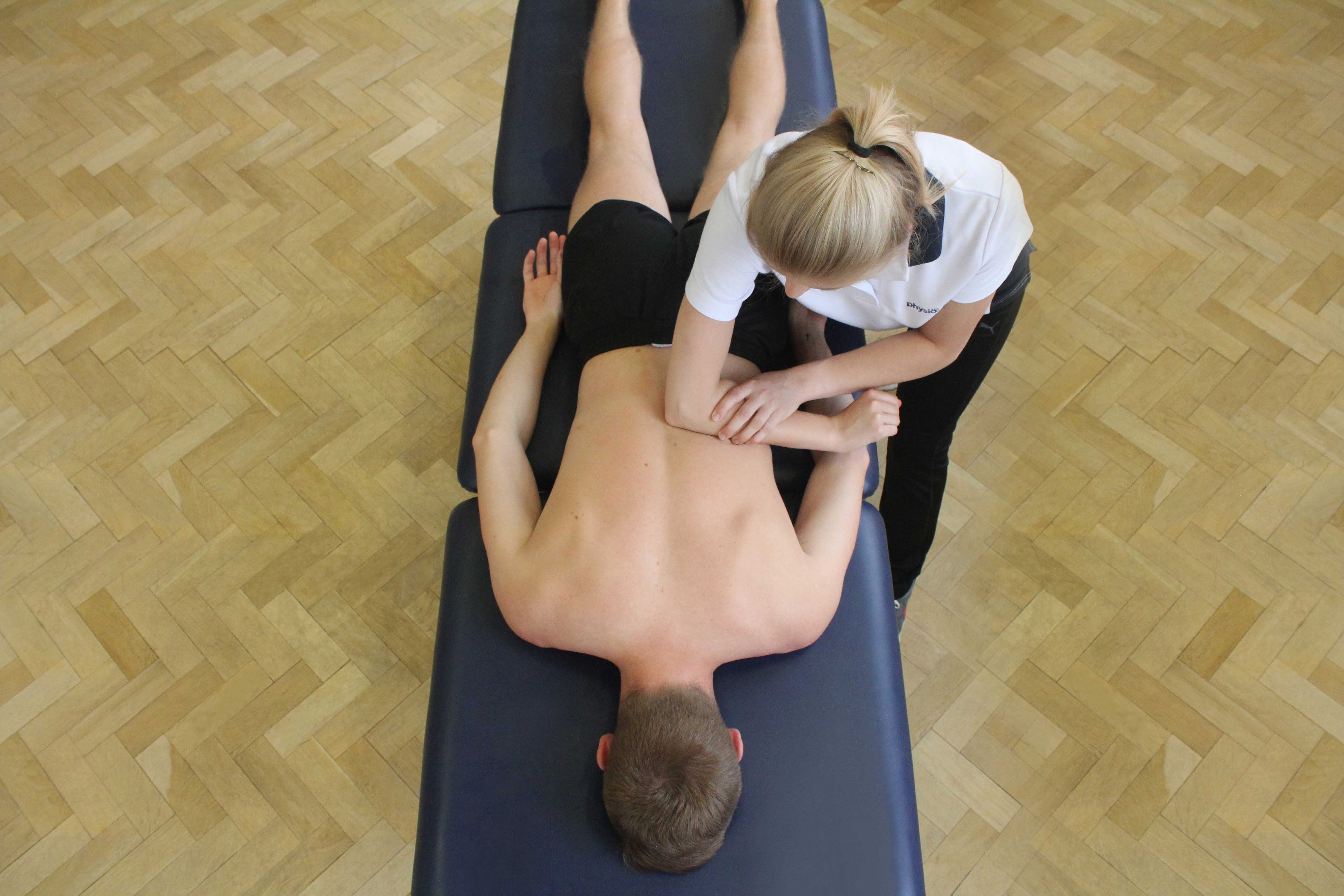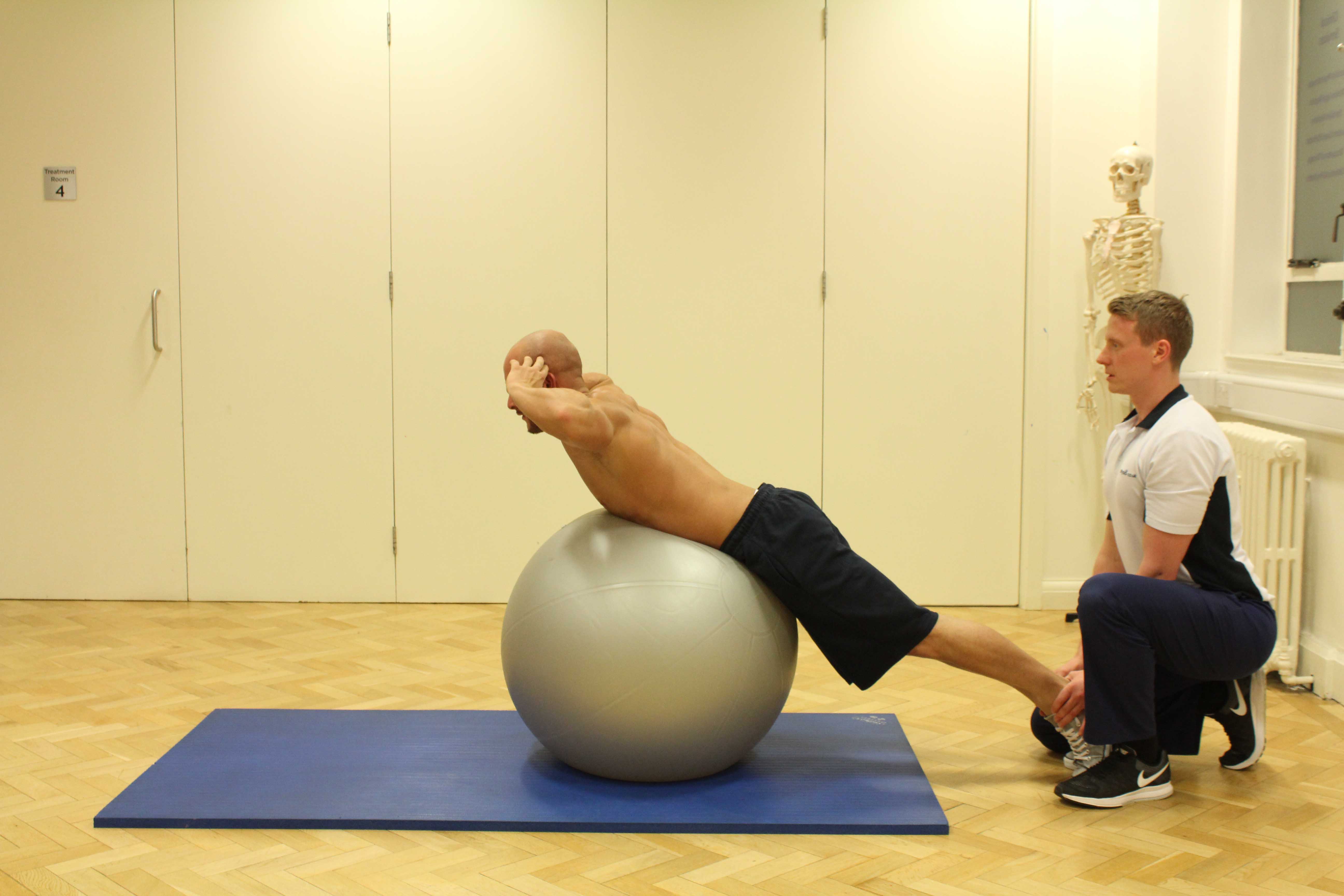What is a sacroiliac joint disorder?
The sacroiliac joint (SI joint) joins your hip to your spine. You have two sacroiliac joints located in your lower back, just above each buttock. A sacroiliac joint disorder is a condition that affecting this joint. Physiotherapy is an excellent treatment for sacroiliac joint disorders.
 Above: Deep tissue massage of the muscles in the lower back by specialist therapist
Above: Deep tissue massage of the muscles in the lower back by specialist therapistHow does a sacroiliac joint disorder happen?
A sacroiliac joint disorder can be caused by excessive movement in the sacroiliac joint. This excessive movement can strain the ligaments and other soft tissues that support the joint. Pain and inflammation of the sacroiliac joint can be caused if the ligaments and supporting structures are continually stressed and overstretched.
What are the symptoms of a sacroiliac joint disorder?
Pain on one side of the back, just above the buttock, is commonly seen in individuals with a sacroiliac joint disorder. Pain may also be felt in the groin or the front and outside of the thigh. Other symptoms include:
- reduced range of movement
- swelling/inflammation
- stiffness
- weakness
- numbness
- spasm
- tingling / pins and needles
 Above: Progressive strengthening exercises for the lower back supervised by an experienced therapist
Above: Progressive strengthening exercises for the lower back supervised by an experienced therapistWhat should I do if I have a sacroiliac joint disorder?
If you have or suspect you may have a sacroiliac joint disorder, you should arrange a physiotherapy assessment.
Physiotherapy treatment for a sacroiliac joint disorder.
Physiotherapy is very important in the treatment of sacroiliac joint disorders. Your physiotherapist will diagnose your problem and determine its severity. From this they will devise a treatment plan specifically for you. Treatment may involve:
 Above: Soft tissue massage of the lower back muscles and connective tissue by specialist therapist
Above: Soft tissue massage of the lower back muscles and connective tissue by specialist therapistWhat shouldn’t I do if I have a sacroiliac joint disorder?
If you have or suspect you have a sacroiliac joint disorder, you should not ignore the problem and continue to perform activities that aggravate your pain or participate in sports. This may lead to your problem worsening, resulting in a prolonged recovery.
Could there be any long-term effects from a sacroiliac joint disorder?
Sacroiliac joint disorders usually do not produce any long-term effects, if they are properly diagnosed and treated. Recovery normally takes place in a number of weeks. Recovery may be prolonged if the injury is severe.
 Above: Progressive strengthening exercises for the lower back supervised by specialist MSK physiotherapist
Above: Progressive strengthening exercises for the lower back supervised by specialist MSK physiotherapistTo arrange a physiotherapy assessment call Physio.co.uk on 0330 088 7800 or book online.

 0330 088 7800
0330 088 7800

































